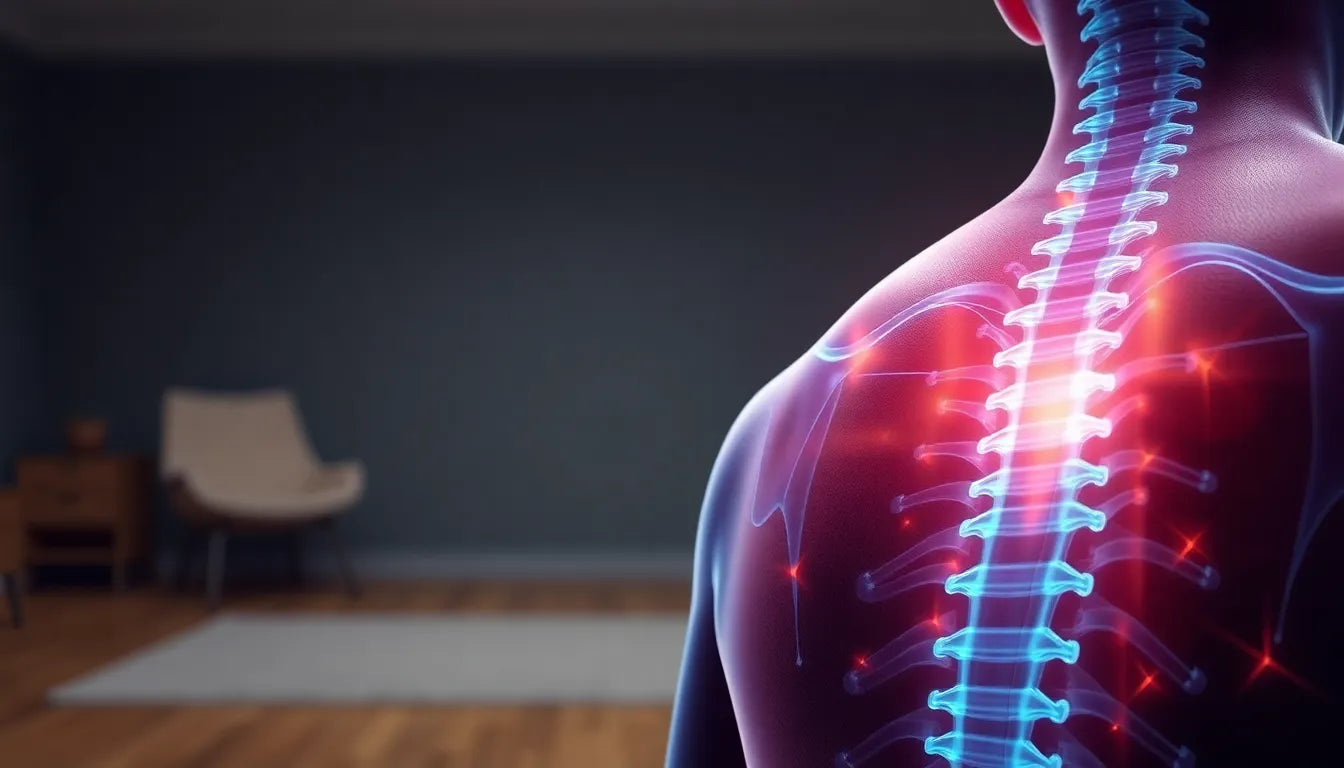Intervertebral disc disease (IVDD), commonly referred to as a herniated or slipped disc, is a significant health concern for dogs that can lead to serious complications if not detected early. This condition involves the displacement or rupture of the cushioning discs between the vertebrae, which can press on the spinal cord and nerves, causing pain and mobility issues. Recognizing the symptoms early is crucial for preventing severe outcomes and ensuring effective treatment, making awareness paramount for every dog owner.
understanding herniated discs in dogs
A herniated disc in dogs occurs when the intervertebral disc material extrudes or bulges out of place, often compressing the spinal cord or nerve roots. This condition can lead to varying degrees of discomfort and functional impairment, depending on the severity and location of the herniation. Dogs suffering from a herniated disc may exhibit signs ranging from mild pain to severe neurological deficits, making it essential for pet owners to be vigilant in observing their pets' behavior and physical condition.
Herniated discs are particularly common in certain breeds, notably those with shorter legs and longer backs, such as Dachshunds, Beagles, and Poodles. These breeds are genetically predisposed to IVDD due to their anatomical structure, which places additional stress on the spine. Typically, the condition manifests between the ages of 4 and 7, although it can occur at any age. Early detection and intervention are critical in managing this condition effectively, underscoring the role of pet owners in recognizing early signs and seeking veterinary care promptly.
As a responsible pet owner, understanding the potential symptoms of a herniated disc can make a significant difference in your dog's health and quality of life. By being attentive to changes in your dog's behavior, mobility, and overall demeanor, you can take swift action in seeking professional veterinary advice and care. This proactive approach not only alleviates your dog's discomfort but also enhances their chances of recovery and long-term well-being.
common symptoms of herniated disc in dogs
Recognizing the symptoms of a herniated disc in dogs is crucial for pet owners, as early detection can significantly impact the course of treatment and recovery. One of the primary indicators of this condition is pain, which can manifest in various ways. Dogs may exhibit signs of back or neck pain, such as shivering, panting, or displaying anxiety. These symptoms can be subtle, but they often indicate discomfort and should prompt a closer examination of your dog's behavior.
Mobility issues are another key symptom of a herniated disc. Dogs may show reluctance to move, limp, or display lameness. An unsteady or wobbly gait, known as ataxia, is a common sign, as is dragging or knuckling of the paws. These symptoms suggest that the dog is experiencing weakness or a lack of coordination in its limbs, which can be distressing for both the pet and the owner.
In severe cases, herniated discs can lead to paralysis, urinary or fecal incontinence, and difficulty in posturing to urinate or defecate. These symptoms indicate significant nerve compression and require immediate veterinary attention to prevent further deterioration and to explore treatment options.
symptoms by location of disc herniation
The symptoms of a herniated disc can vary depending on the location of the disc herniation along the spine. In the cervical (neck) region, dogs may experience neck pain, reluctance to move the neck, and weakness in all four limbs. This location often results in more pronounced pain with less functional loss compared to other regions.
For herniations in the thoracolumbar (mid-back) region, symptoms typically include hind leg weakness or paralysis, knuckling, and an unsteady gait. This area is a common site for disc herniations, particularly in breeds predisposed to intervertebral disc disease.
In the lumbosacral (lower back) region, symptoms may include a limp tail, incontinence, difficulty jumping, and pain in the lower back. These symptoms can significantly affect a dog's quality of life and mobility, necessitating prompt veterinary evaluation.
progression and severity
The progression and severity of herniated discs in dogs can vary widely. Intervertebral disc disease is generally classified into two types: Type 1 and Type 2. Type 1 involves a sudden rupture of the disc, leading to rapid onset of symptoms, whereas Type 2 is characterized by a chronic bulging of the disc, resulting in a slower progression of symptoms. Understanding these differences is essential for managing the condition effectively and anticipating potential outcomes.
breed and age predisposition
Certain breeds are more predisposed to herniated discs due to their anatomical structure. Dachshunds, Beagles, and Poodles are among the breeds at higher risk, particularly those with shorter legs and longer backs. These breeds are genetically inclined to develop intervertebral disc disease, typically between the ages of 4 and 7. However, it's important to note that any dog can develop a herniated disc, regardless of breed or age.
Being aware of these predispositions allows pet owners to be more vigilant in monitoring their dogs for early signs of a herniated disc. By understanding the common symptoms and how they vary by location, progression, and breed, owners can take proactive steps to seek veterinary care and improve their pet's quality of life.
Diagnosis and treatment insights
Recognizing the signs of a herniated disc in your dog is the first step, but obtaining a professional diagnosis is crucial for effective management. Veterinarians typically use a combination of physical examinations and diagnostic imaging, such as X-rays or MRIs, to confirm the presence and severity of intervertebral disc disease (IVDD). These tools help pinpoint the location of the herniation and assess the extent of spinal cord compression.
Treatment options vary depending on the severity of the condition. Mild cases may be managed with medication to control pain and inflammation, alongside strict rest to allow the spine to heal. In more severe cases, physical therapy can aid in recovery by improving mobility and strengthening the muscles supporting the spine. Surgical intervention may be necessary for dogs experiencing significant neurological deficits or paralysis, aiming to relieve pressure on the spinal cord and restore function.
Home management and prevention tips
In addition to veterinary care, there are several ways pet owners can manage and prevent herniated discs at home. Ergonomic aids such as ramps and harnesses can be beneficial for dogs with disc issues, reducing the strain on their spines during daily activities like climbing stairs or getting into vehicles. Providing a supportive bed can also help alleviate pressure on the spine while resting.
Maintaining a healthy weight through a balanced diet and regular low-impact exercise is vital in preventing disc problems. Activities like swimming or walking on soft surfaces can help keep your dog fit without putting excessive stress on their spine. Regular veterinary check-ups are also essential to monitor your dog's condition and make any necessary adjustments to their care plan.
Frequently asked questions
How do I know if my dog has a herniated disc?
Look for signs such as pain, mobility issues, and changes in behavior. Common indicators include back or neck pain, reluctance to move, and an unsteady gait. If you notice any of these symptoms, consult your veterinarian for a definitive diagnosis.
Can all dogs develop herniated discs?
While any dog can be affected by a herniated disc, certain breeds are more predisposed due to their anatomical structure. Breeds like Dachshunds, Beagles, and Poodles are at higher risk, particularly between the ages of 4 and 7.
What should I do if I suspect my dog has a herniated disc?
If you suspect your dog has a herniated disc, seek immediate veterinary attention. Prompt intervention can prevent further damage and help your veterinarian discuss appropriate treatment options for your dog’s condition.
Are there ways to prevent herniated discs in dogs?
Yes, there are several preventive measures you can take. Maintaining a healthy weight, providing ergonomic aids like ramps and harnesses, and ensuring your dog engages in safe physical activities can help reduce the risk of herniated discs.
What is the prognosis for dogs with herniated discs?
The prognosis for dogs with herniated discs varies based on the severity of the condition and the treatment received. Many dogs recover well with appropriate care, especially if the condition is detected early and managed effectively.
In conclusion, being vigilant and seeking prompt veterinary care are key to managing herniated discs in dogs. By recognizing symptoms early and taking proactive steps, pet owners can significantly enhance their dog's quality of life and overall well-being.
Sources
- PetMD. "Intervertebral Disc Disease (IVDD) in Dogs."
- UC Davis School of Veterinary Medicine. "Intervertebral Disc Disease (IVDD)."
- VetSpecialists.co.uk. "Intervertebral Disc Disease (IVDD)."
- Carolina Vet Specialists. "Intervertebral Disc Disease in Dogs."
- Westport Veterinary. "IVDD in Dogs: Symptoms, Diagnosis & Treatment."
- Nashville Vet Specialists. "IVDD in Dogs: What You Need to Know."


















